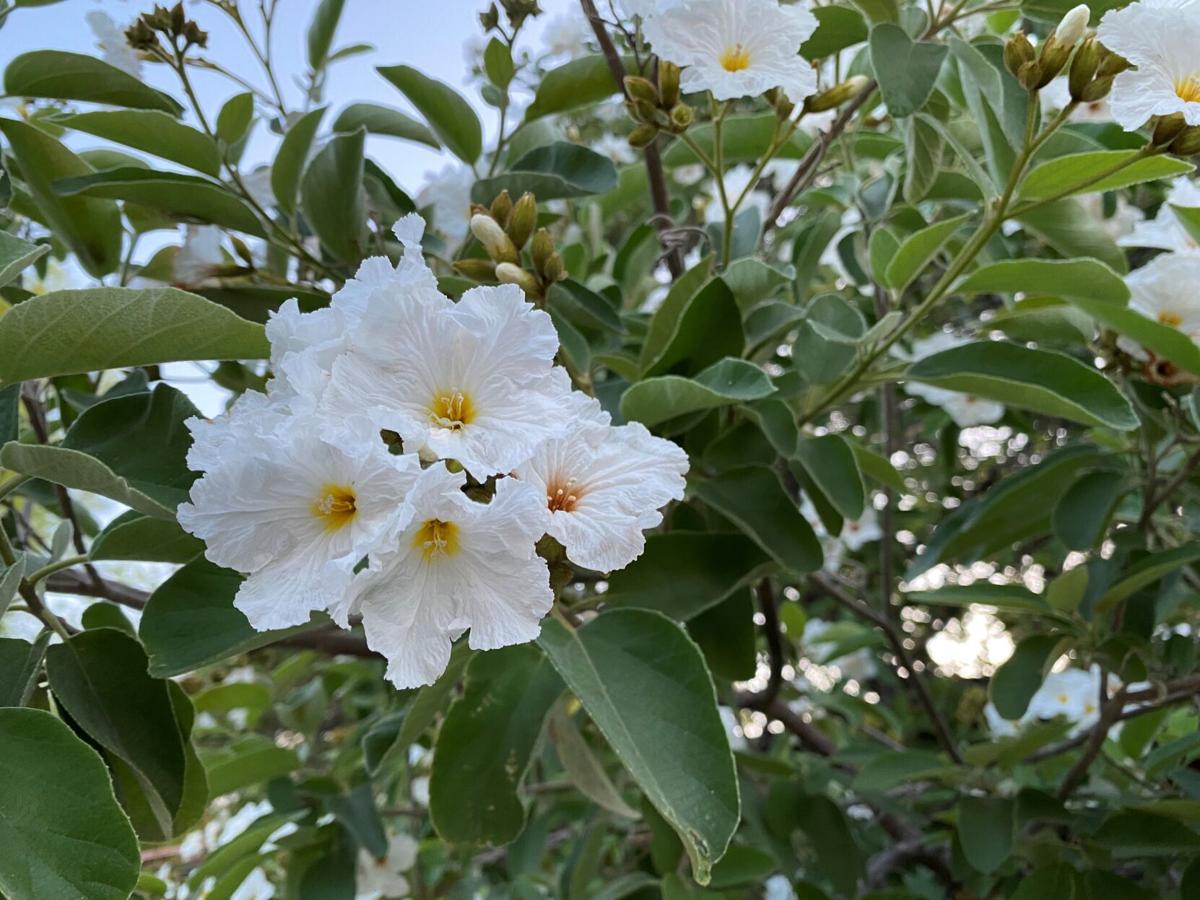The Texas olive (Cordia boissieri) is a beautiful small tree from our neighboring Chihuahuan Desert. It can also be grown as a large shrub. It can reach up to 25 feet in height. Despite its name, it’s not an olive, nor is it related to olive trees.
The tree has lush green oval leaves and gorgeous 2-inch white orchid-like flowers. It is evergreen, unless temperatures reach into the 20s in which case the leaves may dry up and fall off. The tree is hardy to the low 20s and is a good candidate for cooler areas around Tucson. It will do fine in full sun, but will need supplemental watering. It can grow in part-shade as well.
It’s a fairly slow grower, but, as with all trees, will grow faster in favorable conditions. It does litter a fair bit, since it drops fruit and (potentially) leaves, so it’s best in mulched areas. While it needs supplemental water, it does not like to sit in wet soil, so be careful not to overwater it and let soil dry out between waterings. In our climate, summer watering once a week or two (for established plants) should be fine, unless you have poorly-draining soil.
If you want it to take on a tree shape, you will likely need to prune it initially. Otherwise, It makes for a very attractive, tall screening shrub and is a great alternative to oleander. It attracts pollinators, particularly butterflies, and is a great habitat plant for birds.
The fruits are small and olive-like (thus its name) and have been used in Mexico for medicinal purposes. They are somewhat toxic when raw, and are cooked in medicinal applications. The jelly made from the fruits, for example, is used to treat cough and cold symptoms. The dropped fruits are the main source of the litter. Be advised that they may cause dizziness and indigestion in pets when eaten, although they are not listed as toxic to pets by the ASPCA. The plant is also considered to have low allergenic potential.





